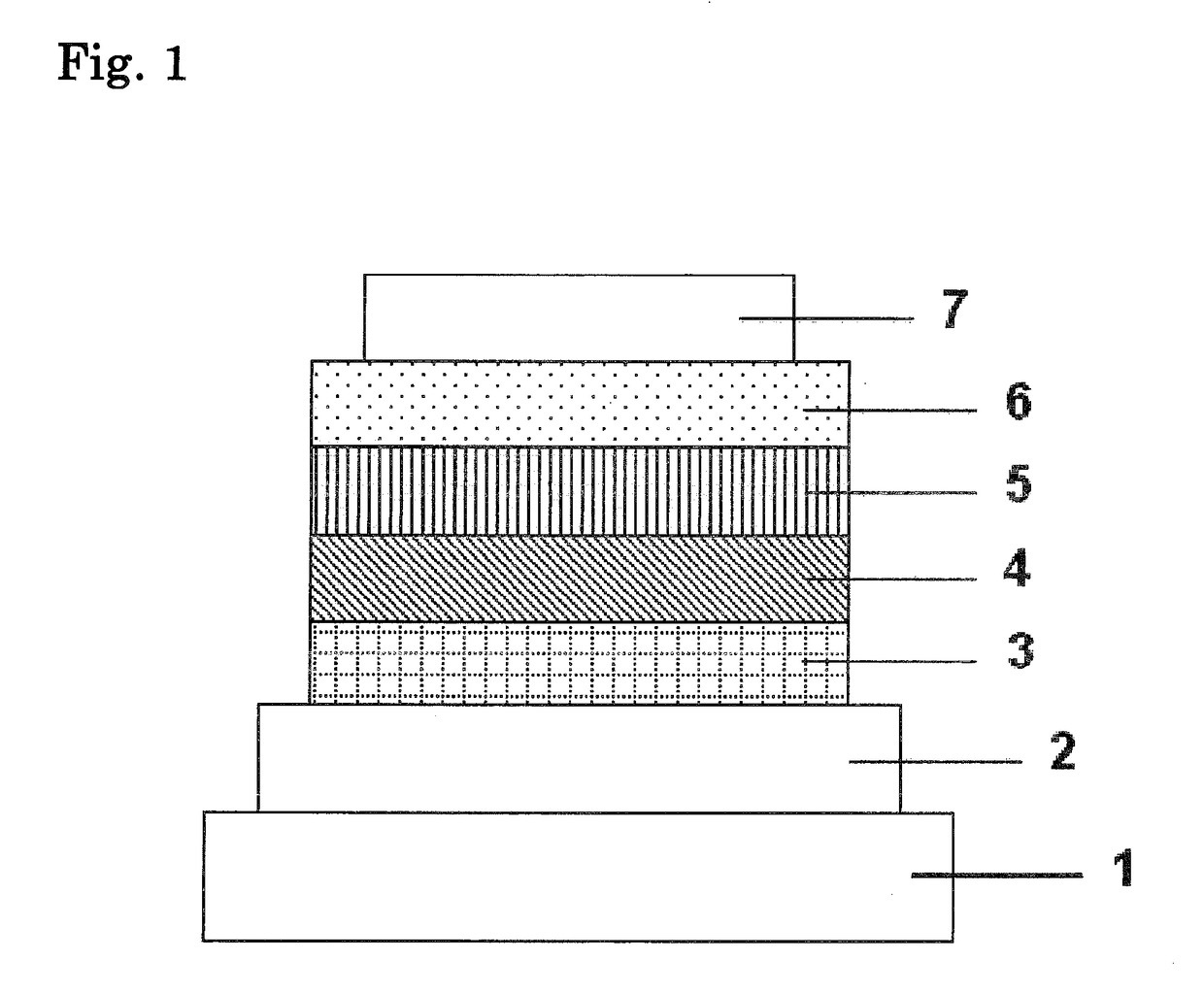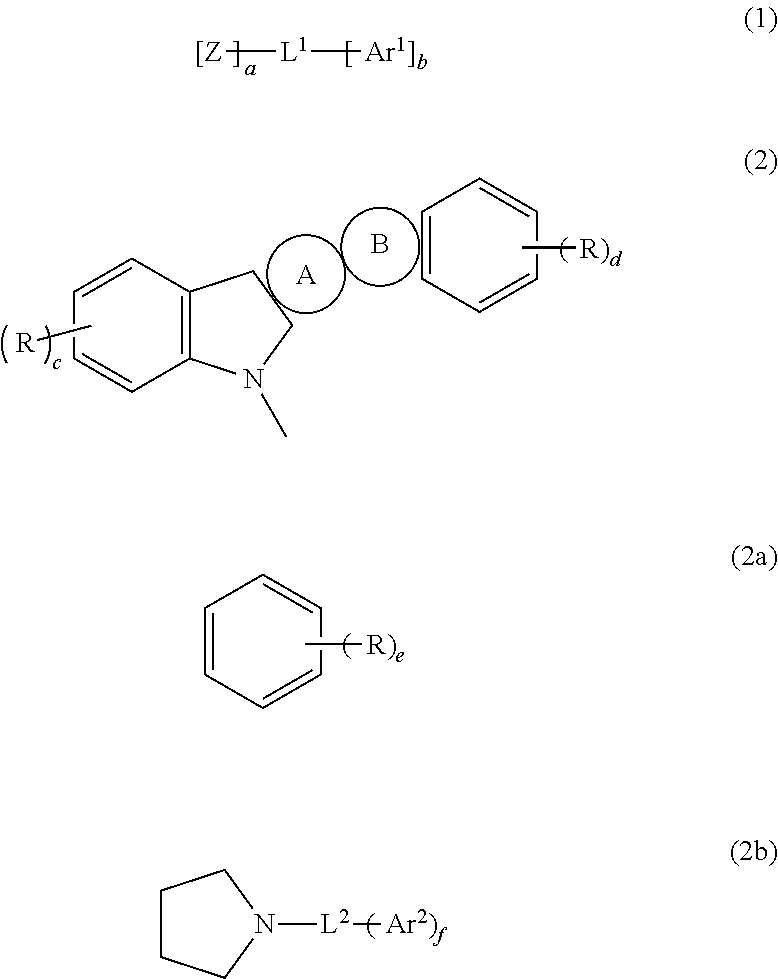Organic electroluminescent element
a technology of electroluminescent elements and organic materials, which is applied in the direction of organic chemistry, luminescent compositions, semiconductor devices, etc., can solve the problems of unreachable high-efficiency light emission, and achieve high luminous efficiency, long life, and low driving voltage
- Summary
- Abstract
- Description
- Claims
- Application Information
AI Technical Summary
Benefits of technology
Problems solved by technology
Method used
Image
Examples
example 1
[0099]Each thin film was laminated on a glass substrate having formed thereon an anode formed of ITO having a thickness of 110 nm by a vacuum deposition method at a degree of vacuum of 4.0×10−5 Pa. First, CuPc serving as a hole-injecting layer was formed on ITO so as to have a thickness of 20 nm, and then NPB serving as a hole-transporting layer was formed so as to have a thickness of 20 nm. Next, the preliminarily mixed host H1 serving as a host for a light-emitting layer and Ir(PPy)3 serving as a light-emitting dopant were co-deposited from different deposition sources to form a light-emitting layer having a thickness of 30 nm. At this time, a deposition rate ratio between the H1 and Ir(PPy)3 was 94:6. Next, BAlq serving as a hole-blocking layer was formed so as to have a thickness of 10 nm, and then Alq3 serving as an electron-transporting layer was formed so as to have a thickness of 40 nm. Further, lithium fluoride (LiF) serving as an electron-injecting layer was formed on the ...
example 2
[0101]An organic EL device was produced in the same manner as in Example 1 except that in Example 1, the H2 was used as a host for a light-emitting layer. An external power source was connected to the resultant organic EL device to apply a DC voltage to the device. As a result, an emission spectrum having a local maximum wavelength of 517 nm was observed, and hence it was found that light emission from Ir(PPy)3 was obtained. The luminance, driving voltage, luminous efficiency, and luminance half-life of the produced organic EL device are shown in Table 2.
examples 3 to 5
[0107]Organic EL devices were continuously produced three times in the same manner as in Example 1. The device produced in the first time was defined as Example 3, the device produced in the second time was defined as Example 4, and the device produced in the third time was defined as Example 5. The luminance, driving voltage, and luminous efficiency of each of the produced organic EL devices are shown in Table 3. The luminance, the driving voltage, and the luminous efficiency are values at a driving current of 20 mA / cm2, and are initial characteristics.
PUM
 Login to View More
Login to View More Abstract
Description
Claims
Application Information
 Login to View More
Login to View More - R&D
- Intellectual Property
- Life Sciences
- Materials
- Tech Scout
- Unparalleled Data Quality
- Higher Quality Content
- 60% Fewer Hallucinations
Browse by: Latest US Patents, China's latest patents, Technical Efficacy Thesaurus, Application Domain, Technology Topic, Popular Technical Reports.
© 2025 PatSnap. All rights reserved.Legal|Privacy policy|Modern Slavery Act Transparency Statement|Sitemap|About US| Contact US: help@patsnap.com



